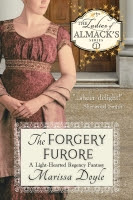Ah, a dreary month is November. Good society is largely at home in the country. Those in town must find things to occupy their days and evenings. I have heard that Mr. Sheldon’s lectures on anatomy commence the first Monday in November in the evening at the Royal Academy’s rooms at Somerset House. Tickets can be had for free from any of the esteemed artists and architects that serve as Academicians. Unfortunately, many of us who frequent Nineteenteen would not be allowed to attend. We’re women, you see. Learning about anatomy wasn’t deemed appropriate for our tender sensibilities.
[Grumble, grumble, kick the wall, grumble some more.]
But there are other ways to learn about anatomy, be it of an animal nature or the human body. We could, with permission of the curators, visit Dr. John Hunter’s museum under the care of the Company of Surgeons.
Dr. Hunter was considered one of the premiere anatomists in Europe during his lifetime, which ended in 1793. He collected and preserved hundreds of specimens of animals and human tissue, some of it deformed or diseased. He also developed models in wax and had artists such as George Stubbs paint detailed pieces of the various subjects of interest to him, including North American Indians, Inuit, and a yak.
In glass bottles and cases, he presented almost 14,000 preparations, from the simplest forms of life like a shrimp up to man himself, embalmed or preserved in spirits. Hunter arranged them by parts: those used for motion, for bodily function, for reproduction of the species, and for maintenance and protection of the young. Specimens from the animal kingdom included a rhinoceros from Egypt, a giant beaked squid brought back from Captain Cook’s voyages in the Pacific, and ostriches from Australia. He had some of the only skeletons of whales in Europe. Not content with the animals still living, he also collected fossils of extinct animals.
Perhaps most interesting, or disturbing as the case might be, were the specimens of the human form. Anatomists required human cadavers to perfect their art, yet procuring such specimens often involved unsavory pursuits like grave robbing. Thankfully, Mr. Hunter’s fame was such that he was often provided with cadavers to experiment upon. His collection included everything from dwarfs to giants, all standing appropriately for study.
The Hunterian Collection is still available for tour at the Royal College of Surgeons in London. And women are welcome.
Subscribe to:
Post Comments (Atom)








4 comments:
Thanks for posting. If I ever go to London, I would love to see the Hunterian Collection.
P.S. I just started reading Be My Bride. Does Lady Dorothea Darby have her own story? If not, are there any future plans? (I loved reading about them)
Thanks for posting. If I ever go to London, I would love to see the Hunterian Collection.
P.S. I just started reading Be My Bride. Does Lady Dorothea Darby have her own story? If not, are there any future plans? (I loved reading about them)
Hi, J. Grace! The Hunterian does sound fascinating. I understand it has recently been refurbished to look more like the original setting.
I haven't written about Lady Dorothea--thanks for the suggestion! :-) I always thought I'd like to write about Alexander Darby, but I admit to a worry about doing the military justice. I did write about Jareth Darby--he is the hero of Utterly Devoted. One of my favorite "bad boys." :-)
Sorry for all the posts, I was writing from my cell and it was acting strange.
I love Utterly Devoted(I have read it about 3 times already) which is why I was wondering if more Darby stories are coming :)
Post a Comment